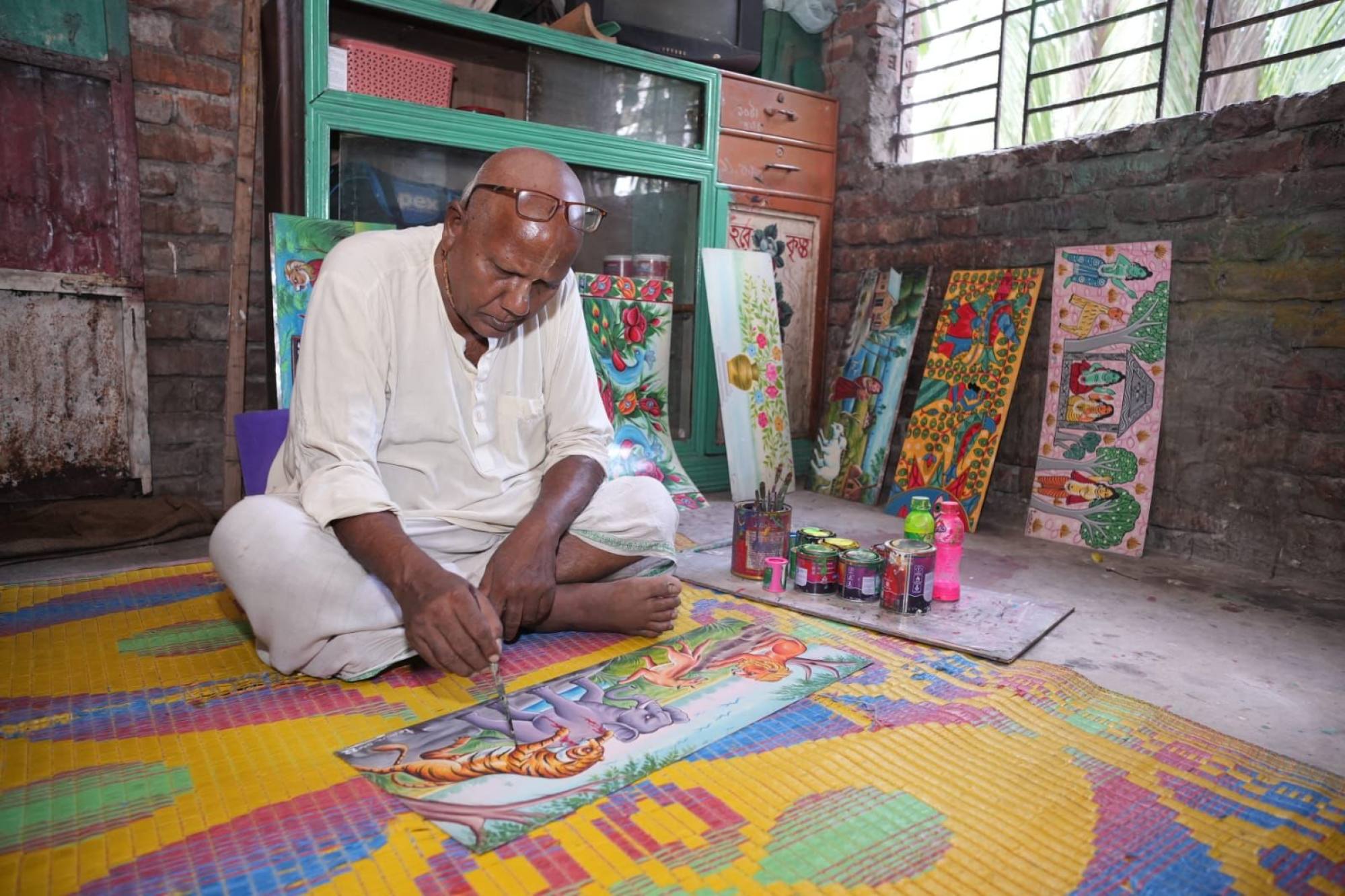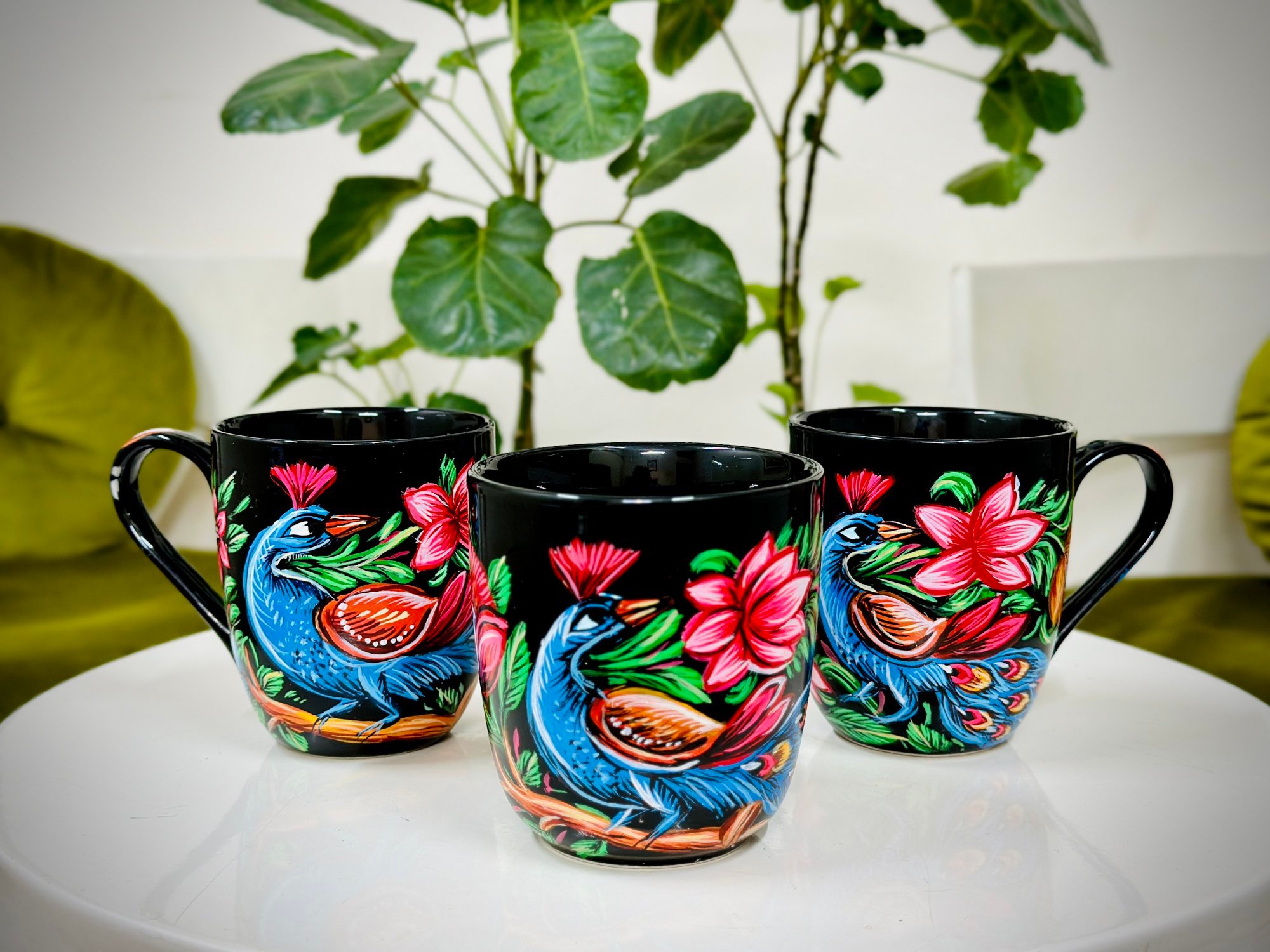Can Bangladesh preserve its Unesco-listed, colourful painted rickshaws?
[ad_1]
“In the past, they were also decorated with colourful veils and sequin shawls, but this is also slowly disappearing,” Hamid said.
Rickshaws remain a popular means of conveyance in cities and towns across Bangladesh, with an estimated one million of the slow-moving tricycles on the roads.
Rickshaw art first began in Dhaka in the 1950s and expanded nationwide, with every Bangladeshi town now having its special style.
Those in Chittagong feature floral designs, while the rickshaws of Comilla feature solid colours embellished with bright appliqué designs stitched on to them. In the late 1940s, portraits of film stars also began appearing on the backs of the vehicles.

This kitschy form of “people’s art” recently earned major international recognition when it was added to Unesco’s Representative List of the Intangible Cultural Heritage of Humanity in December.
“As modern forms of transport are becoming more common, the number of rickshaws being used are diminishing, thereby putting the practice of rickshaw painting under threat. This significantly impacts the viability of the element and the livelihoods of practitioners of the craft, in particular the younger generation,” said Tim Curtis, the director of Unesco’s New Delhi regional office for South Asia.
Professor Mustafizur Rahman, a Bangladeshi based in Singapore, recalls his days as a young boy, riding in rickshaws from school everyday in Dhaka.
“Young couples particularly love the transport as it brings them close literally and often the hood offers privacy,” he said with a smile.
The first rickshaws in Bangladesh came from Kolkata, India, imported by British jute importers for their travels. It later evolved to a form of transport for locals.
Decorating rickshaws started as a way to compete for business, with horse-drawn carriages.

In the 70s, rickshaws featured freedom fighters and tanks as they fought for liberation from Pakistan.
Themes of rickshaw art range from history to folklore and even futuristic cities and aspirational art. Popular images include Dhaka’s Parliament House, the national flower the water lily, and leaders like Nehru and Mahatma Gandhi. Often, Arabic calligraphy and the name of the owner are painted written somewhere.
Bangladesh is a Muslim-majority nation, but Hindu art and images like those of Lord Krishna are as popular as those of mosques. Images of global iconic structures such as the Taj Mahal, the Eiffel Tower and London Bridge are also popular. Many artists also paint tranquil, rural scenes that remind them of the villages they left behind when they moved to the cities for jobs.
Most of this art is done by illiterate rickshaw artists, many of whom are found on Bangsal Street in Dhaka and learned the craft from their parents or teachers.
‘I am my own master’: in India, electric rickshaws uplift lives of trans people
‘I am my own master’: in India, electric rickshaws uplift lives of trans people
Dhaka-based rickshaw artist Syed Ahmed Hossain, 68, first learned the art as a 10-year-old who loved to doodle.
“I never had any formal training as my father could not afford it. But as I was growing up, there was demand for decorating rickshaws, so I always had work. In recent times, much of the work is done in offset printing and very little by hand.”
Hossain has since been invited to exhibit his work in rickshaw art exhibitions in countries like Japan, Italy, France and the US.

“Rickshaw art has now evolved from street adornments to a cultural emblem, seamlessly integrating into everyday life, from decor accents to fashionable attire, infusing every aspect with the timeless allure of our vibrant heritage,” says Maisha Lubaba, CEO of Dhaka-based Protibha, an organisation working to preserve Bangladesh’s dying arts.
Commercial organisations and NGOs have stepped up to try and save this disappearing art form, putting rickshaw-style art on homeware, jewellery, garments, bags and other fabric products.
But more needs to be done, said Sadya Mizan, an art curator and director of the Uronto artist-led open collective in Bangladesh.
“Traditional rickshaw painters have not yet been empowered meaningfully, and the history needs to be promoted more efficiently to keep its dignity aligned with its beauty as an art form,” Mizan said.
[ad_2]
Source link

